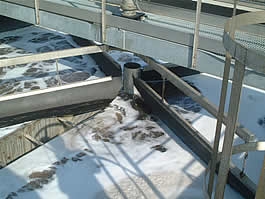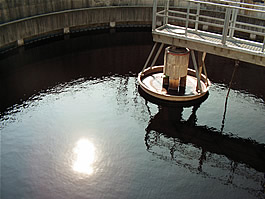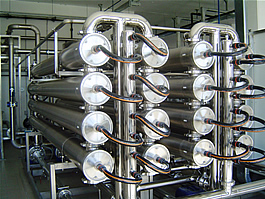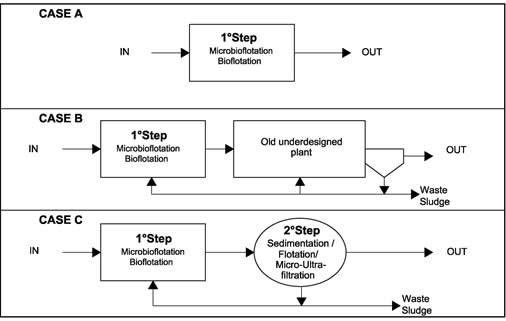
Industrial wastewatersThe Microbioflottazione plant can be applied to a broad spectrum of civil and industrial effluents due to its peculiarities of forced oxidation. It can be advantageously adapted to wastewater with very high polluting loads and to wastewater characterized by a very low biodegradability. The particular chemical-physical working conditions of the system, indeed, characterized by an high oxygen transfer capacity, by a physical cracking of the pollutant macromolecules and by a wastewater detoxification, promote the growth of an high efficient specific biomass. In the following scheme some typical installations (new plant, upgrade existing facilities, advanced plant) are represented.
In all cases, in addition, of course, to ensure the limits required for the discharge, by adding a final step of third phase, it is possible recovering from 20% to 80% (depending on the salt content) of the water in production. What above must be taken as a general reference, in fact, the plant are ad-hoc designed for each specific wastewater, thus offering a broader range of solutions. Each plant is designed in order to maximize the treatment efficiency and the operating costs according to the wastewater characteristics and the current law specifications. Wastewater from textile industries Wastewater from special production and/or heavily polluted Wastewater from agro-food and dairy industries Wastewater from other origins They are usually spreaded on the fields, with serious damage to soil and crops. The main difficulties arise by the content of toxic phenols, being this an indication for the use of the Microbioflottazione.
|
||||
| CIEM IMPIANTI srl Via Torquato Tasso, 39 - 21100 Varese Tel. +39 0332 831 776 - Fax +39 0332 319 278 info@ciemimpianti.com - P.IVA 03040480125 |





